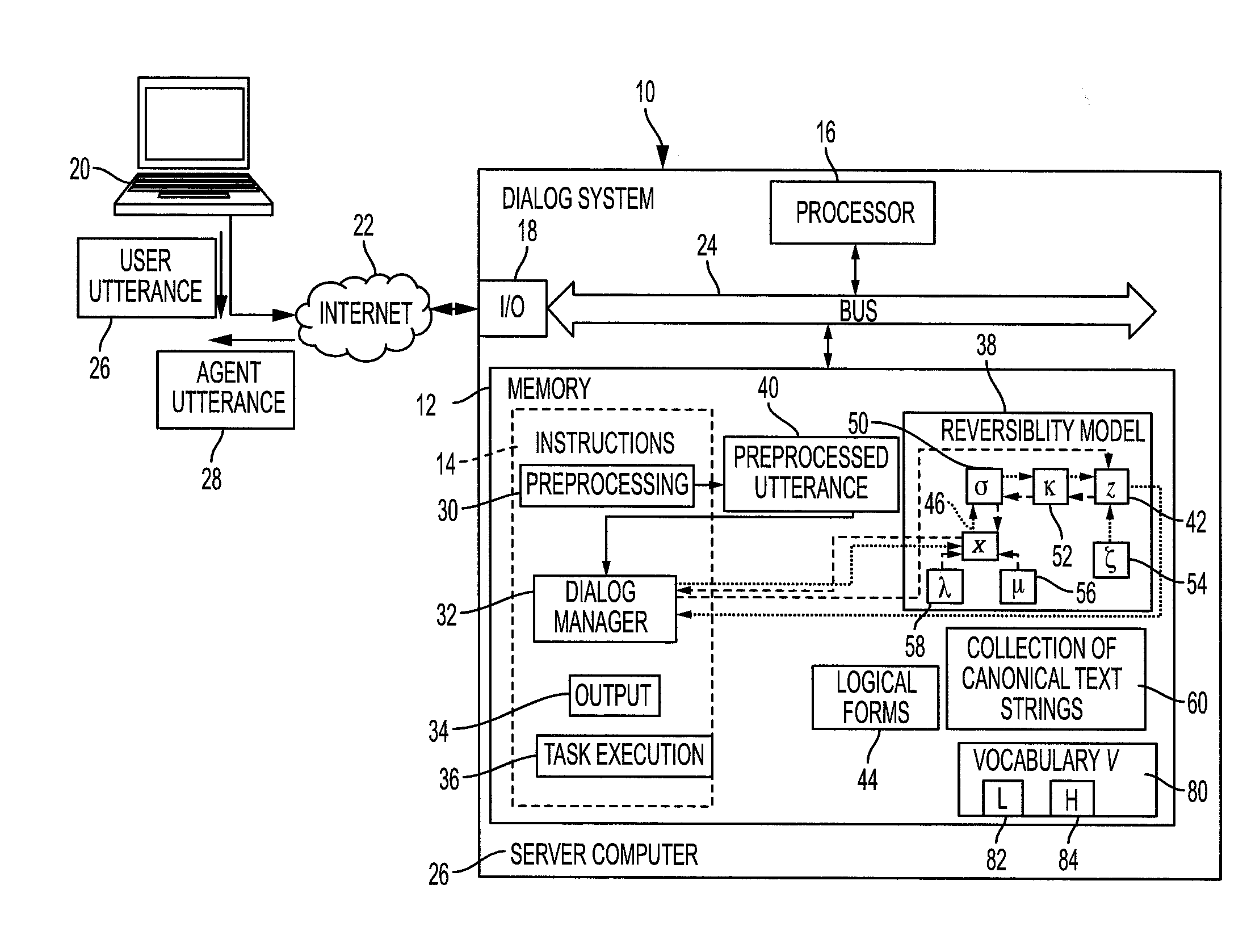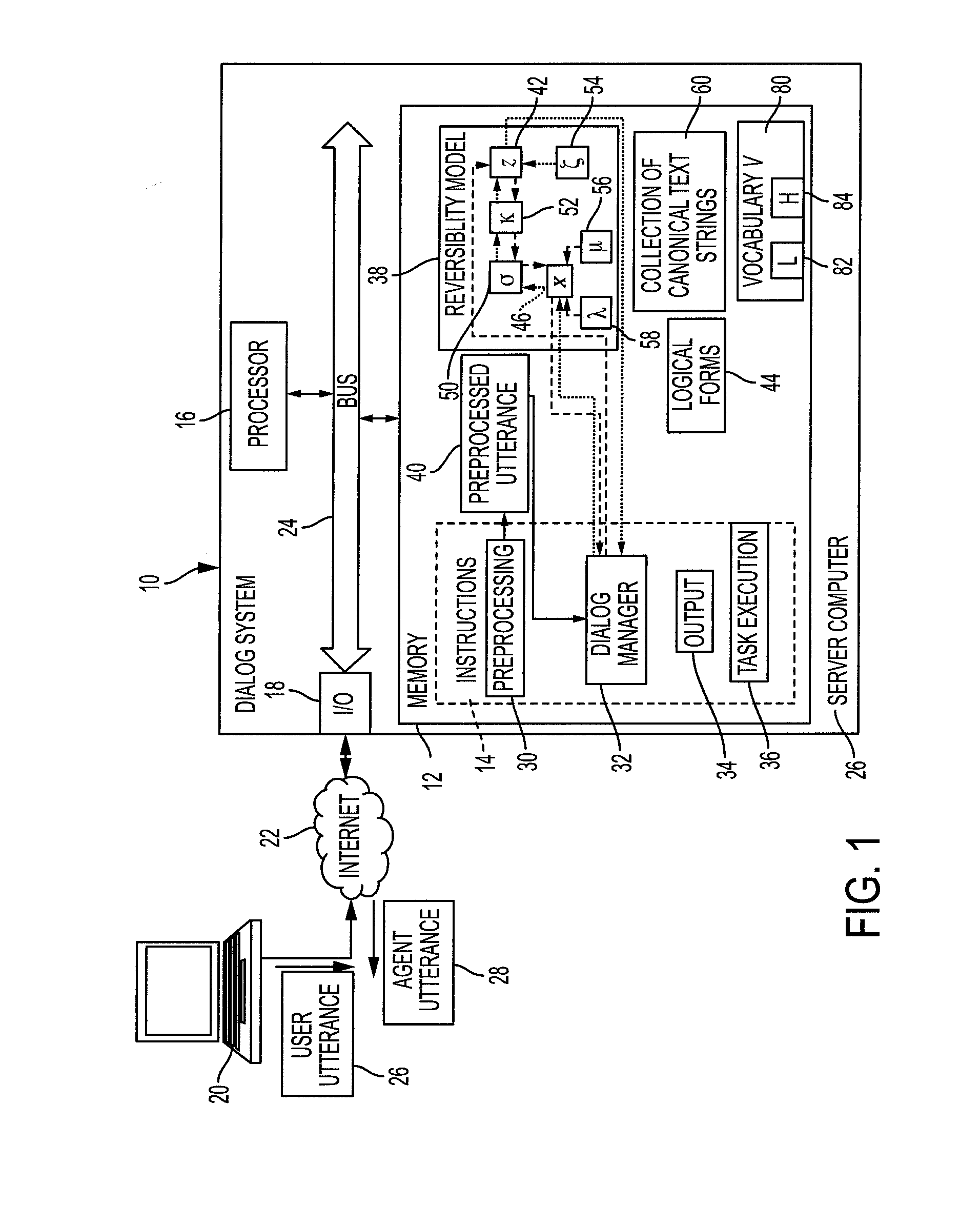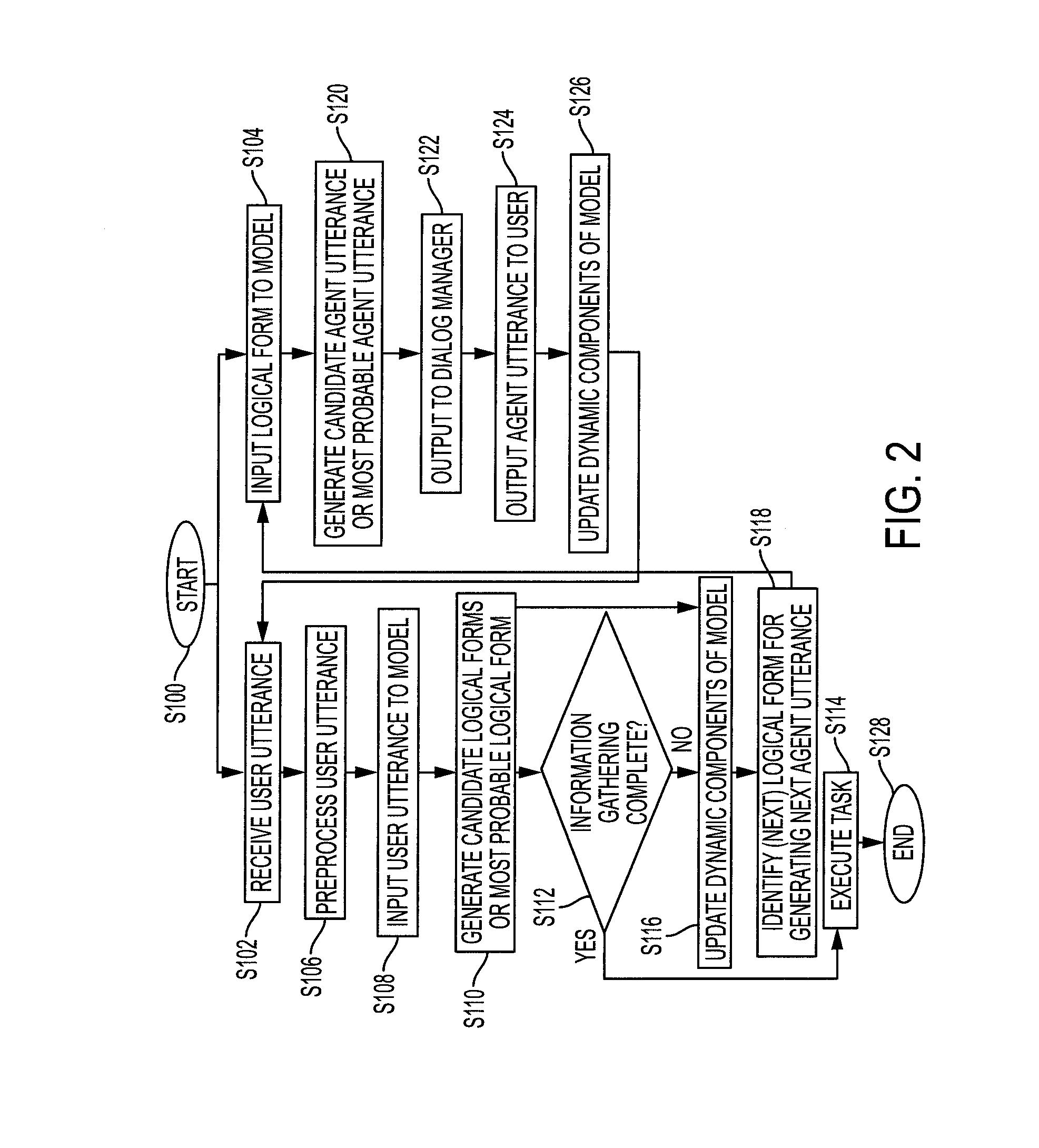Robust reversible finite-state approach to contextual generation and semantic parsing
a finite-state, contextual generation and semantic parsing technology, applied in the field of reverse systems for natural language generation and analysis, can solve problems such as one problem of reversible grammars
- Summary
- Abstract
- Description
- Claims
- Application Information
AI Technical Summary
Benefits of technology
Problems solved by technology
Method used
Image
Examples
example 1
[0134]In this example, the input x is the utterance what is the screen size of iPhone 5 ?. The κ and σ transducers are of a form similar to those illustrated in FIGS. 6 and 10. The automaton ζ1 illustrated in FIG. 11 represents the semantic expectations in the current context. This automaton is of a similar form to that of FIG. 9, but presented differently for readability: the transitions between state 2 and state 3 correspond to a loop (because of the ε transition between 2 and 3); also, the weights are here given in the tropical semiring, and therefore correspond to costs. In particular, it is observed that in this context, everything else being equal, the predicate ask_ATT_DEV is preferred to ask_SYM, the device GS3 to iPHONE5, and the attribute BTT (battery talk time) to SBT (standby time) as well as to SS (screen size), and so on. The result αx0 of the composition (see FIG. 4) is represented by the automaton partially illustrated in FIG. 12, where only the three best paths are ...
example 2
[0136]This example uses the same semantic context ζ1 finite state machine as in Example 1, but this time with an input x equal to battery life iPhone 5. FIG. 14 shows the resulting automaton αx0, again after pruning all paths after the third best. The best path is shown in FIG. 15 It corresponds to the logical form ask ask_ATT_DEV(BTT, IPHONE5). In this case, the canonical realization y leading to this best path can be shown to be what is the battery life size of iPhone 5 ?. This example illustrates the robustness of semantic parsing: the input battery life iPhone 5 is linguistically rather deficient, but the approach is able to detect its similarity with the canonical text what is the battery life of iPhone 5?, and in the end, to recover a likely logical form for it.
example 3
[0137]This example uses the same context ζ1 as in Example 1, but this time with an input x=how is that of iPhone 5 ? The resulting automaton αx0 is shown in FIGS. 16 (best 3 paths) and 17 (best path). Here, the best logical form is again ask_ATT_DEV(BTT,IPHONE5), and the corresponding canonical realization y again is what is the battery life of iPhone 5 ?. This example illustrates the value of the semantic context: the input uses the pronoun that to refer in an underspecified way to the attribute BTT, but in the context ζ1, this attribute is stronger than competing attributes, so emerges as the preferred one. Note that while GS3 is preferred by ζ1, to IPHONE5, the fact that iPhone 5 ? is explicitly mentioned in the input enforces the correct interpretation for the device.
PUM
 Login to View More
Login to View More Abstract
Description
Claims
Application Information
 Login to View More
Login to View More - R&D
- Intellectual Property
- Life Sciences
- Materials
- Tech Scout
- Unparalleled Data Quality
- Higher Quality Content
- 60% Fewer Hallucinations
Browse by: Latest US Patents, China's latest patents, Technical Efficacy Thesaurus, Application Domain, Technology Topic, Popular Technical Reports.
© 2025 PatSnap. All rights reserved.Legal|Privacy policy|Modern Slavery Act Transparency Statement|Sitemap|About US| Contact US: help@patsnap.com



